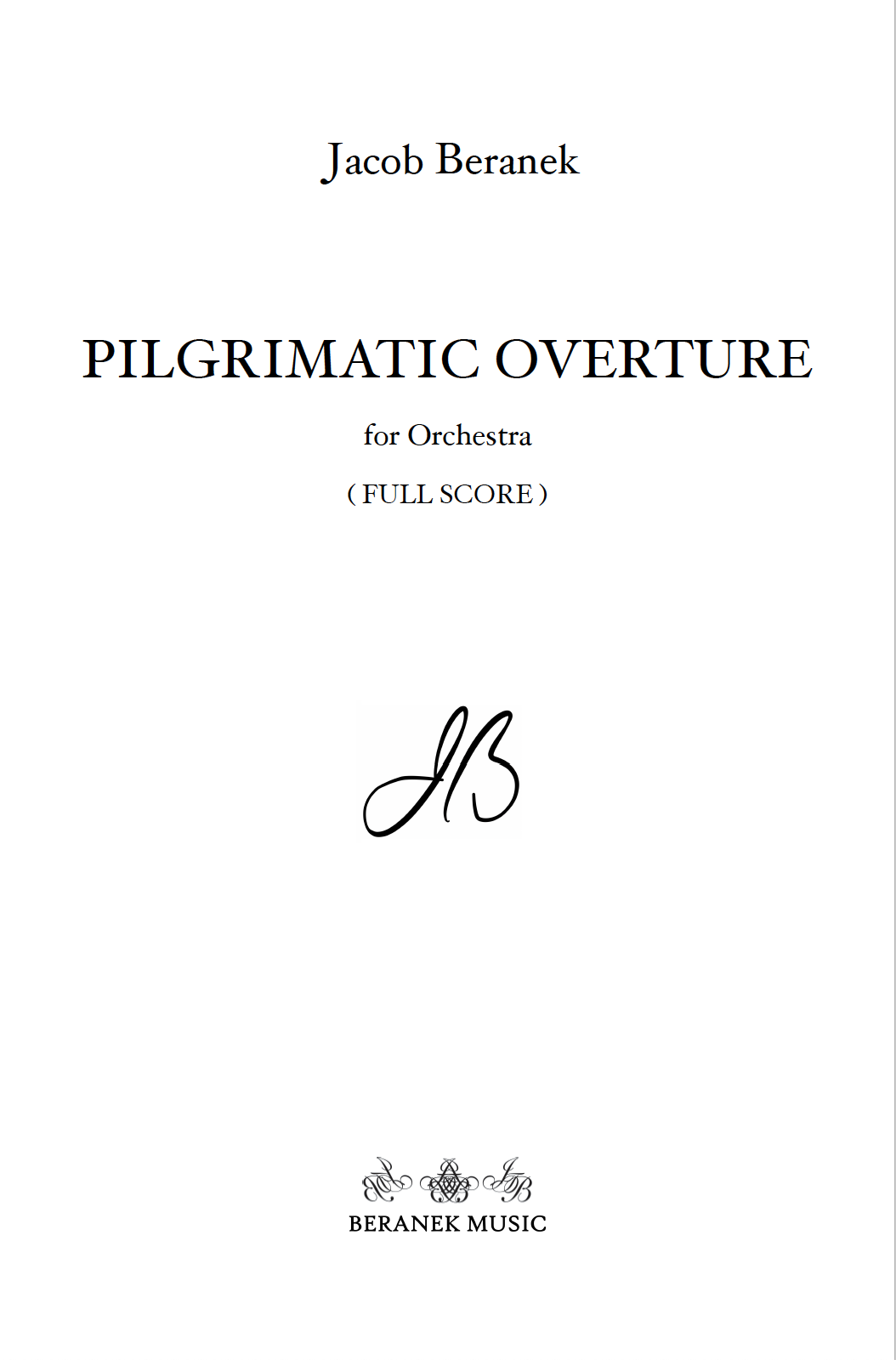PILGRIMATIC OVERTURE
2+picc . 2+eh . 2+bcl . 2+cbn / 4 . 3 . 3 . 1 / timp . 3perc . pno / str
2+picc . 2+eh . 2+bcl . 2+cbn / 4 . 3 . 3 . 1 / timp . 3perc . pno / str
PROGRAM NOTES
In Pilgrimatic Overture, an optimistic main theme (the musical “pilgrim”) is repeatedly challenged and “attacked” by a grim, chaotic, four-note motive. These two purely musical “characters,” the Theme and the Motive, are sometimes in the foreground and sometimes hidden, but are nevertheless always present for the duration of the piece, even though the composition’s overall form shifts from section to section around them. The Theme, which bursts forth in the first measure with pride and pomposity, is gradually worn down by its Motivic adversary. After a prayerful respite, their conflict resumes, swelling to an obliterating point of despair two-thirds of the way through the piece. After this catastrophic climax, when there seems no possibility for hope, shards of musical fallout gradually resurrect the Theme: it rises tentatively at first, but gathers strength and resumes its eternal musical pilgrimage, reassured and more grounded than when it first began.
The idea for a depiction of optimism, trial, perseverance, and hope—while universal experiences—specifically sprang from a passage in the Letter of St. Paul to the Romans that has always resonated with me: “We also glory in our sufferings, because we know that suffering produces perseverance; perseverance, character; and character, hope. And hope does not put us to shame, because God’s love has been poured out into our hearts through the Holy Spirit” (Romans 5:3–5). Hopefully, my music evokes the same sentiments.
—Jacob Beranek
In Pilgrimatic Overture, an optimistic main theme (the musical “pilgrim”) is repeatedly challenged and “attacked” by a grim, chaotic, four-note motive. These two purely musical “characters,” the Theme and the Motive, are sometimes in the foreground and sometimes hidden, but are nevertheless always present for the duration of the piece, even though the composition’s overall form shifts from section to section around them. The Theme, which bursts forth in the first measure with pride and pomposity, is gradually worn down by its Motivic adversary. After a prayerful respite, their conflict resumes, swelling to an obliterating point of despair two-thirds of the way through the piece. After this catastrophic climax, when there seems no possibility for hope, shards of musical fallout gradually resurrect the Theme: it rises tentatively at first, but gathers strength and resumes its eternal musical pilgrimage, reassured and more grounded than when it first began.
The idea for a depiction of optimism, trial, perseverance, and hope—while universal experiences—specifically sprang from a passage in the Letter of St. Paul to the Romans that has always resonated with me: “We also glory in our sufferings, because we know that suffering produces perseverance; perseverance, character; and character, hope. And hope does not put us to shame, because God’s love has been poured out into our hearts through the Holy Spirit” (Romans 5:3–5). Hopefully, my music evokes the same sentiments.
—Jacob Beranek


